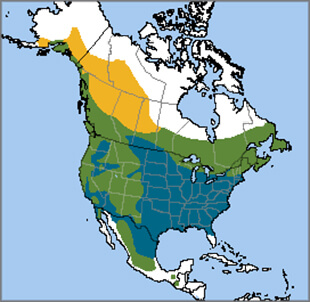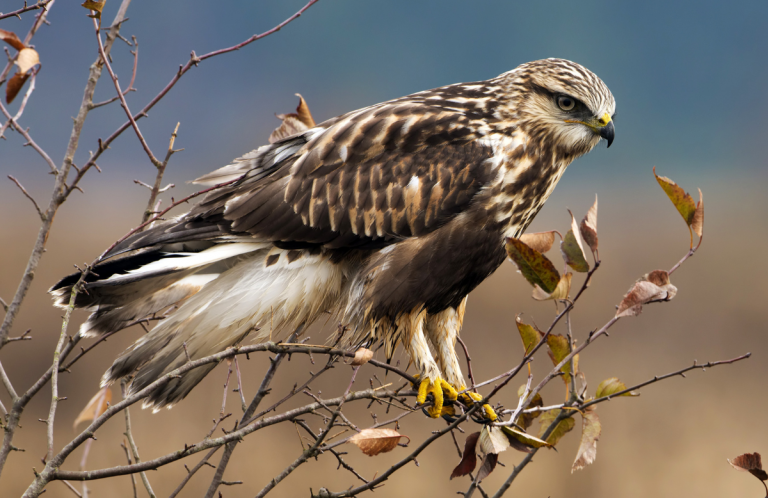
Pine Siskin range map by NatureServe
The streaky brown Pine Siskin is a "goldfinch in disguise," with only touches of the bright yellow plumage worn by its close relatives, the American Goldfinch and Brazil's Yellow-faced Siskin. This species is one of the most common of the "winter finches," a group of birds such as the Evening Grosbeak that sometimes wander far south of their usual wintering grounds. (Scroll down to compare a few of these species' calls.)
Bird Irruption Year
Some years, including this year, bring huge numbers of Pine Siskins south. These movements, called "irruptions," are triggered by lack of food in the north; Pine Siskins in particular appear to be responding to poor spruce, fir, and hemlock cone crops in the Northeast.
Other irruptive species, such as Red-breasted Nuthatches and Common Redpolls, are also on the move. Long-time birders in the East may remember when the Evening Grosbeak was an expected winter visitor. After years without seeing them, reports of this species are now coming in from as far south as Virginia. (To read more and explore the relation between seed crops and irruptive species, see Ron Pittaway's Winter Finch Forecast.)
Boreal-breeding raptors such as the Northern Saw-whet Owl and Rough-legged Hawk are also irruptive species; they prey on small mammals, such as lemmings, which breed in boom-and-bust cycles.
Comparing Calls
With practice, you can identify "winter finches" before you see them, by memorizing their high-pitched calls. Here are a few species to compare and contrast:
(Audio: Pine Siskin recorded in British Columbia by James Bradley, XC302416. Accessible at www.xeno-canto.org/302416. American Goldfinch recorded in Québec by Martin St-Michel, XC298362. Accessible at www.xeno-canto.org/298362. Common Redpoll recorded in Superior National Forest, Minn., by Paul Marvin, XC218758. Accessible at www.xeno-canto.org/218758. Evening Grosbeak recorded in Libby, Mont., by Paul Marvin, XC164554. Accessible at www.xeno-canto.org/164554.)
Sociable Seed-eaters
Pine Siskins consume small seeds, particularly from thistle plants, as well as from trees, including hemlock, spruce, alder, and birch. Aphids and other insects augment their summer diet. These little birds are active and agile feeders, sometimes hanging upside down from branches as they forage. Always gregarious, siskins often feed, roost, and nest in large flocks.
During irruption years, Pine Siskins may descend upon backyard feeders, often associating with American Goldfinches. In such close quarters, these birds are vulnerable to salmonella and other diseases. (Find out how to clean your feeders here.)
Pine Siskins usually nest between March and May, with the beginning of most nesting in early April. However, this bird's breeding activity and range are more closely tied to food abundance than to the season. During irruption years, some pairs of Pine Siskins nest far south of their usual range.
Sign up for ABC's eNews to learn how you can help protect birds
Help Write a Better Story for Birds!
Partners in Flight classifies the Pine Siskin as a "Common Species in Steep Decline," a category that includes such disappearing species as the Grasshopper Sparrow, Loggerhead Shrike, and Common Nighthawk. But with your help, we can turn the declines of these and other bird species around. We can bring birds back, conserve their habitats, and tackle the toughest threats.
Please help us raise $1 million for birds by December 31, 2018 so we can write a better story for the Pine Siskin and other declining birds!
Donate to ABC to change the story for birds!



















































